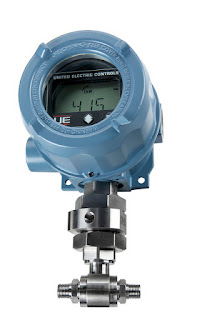 |
| Industrial Batch Process Tanks |
Weight is a measurement of force. We can use it as a statement of "how much" because gravity is considered constant across the planet surface. The force I measure for a batch of material in the US will, for commercial purposes, be the same force measured for that material after I ship it to somewhere else. Measurement of weight can be used for establishing proper mixing ratios of components to be combined in a particular manner. The level of material in a tank or other container can be ascertained through a measurement of weight.
In our processes, higher throughput and accuracy are always in demand.The Vishay Precision Group's BLH/Nobel Weighing Systems operating unit manufactures a high speed, high performance control for industrial weight/force measurement applications. Their G4 line of controllers provides the user a wide range of configurable options, from multiple input channels to analog and digital outputs. The clean user interface provides access to all functions and channels and the unit is available as a freestanding desktop, DIN rail mount, or panel mount unit. There is also a model configured for harsh environments.
The video below provides a good overview of the unit and its potential applications. Contact a product specialist to receive more details, or to discuss how the G4 might be helpful to your process operation.




